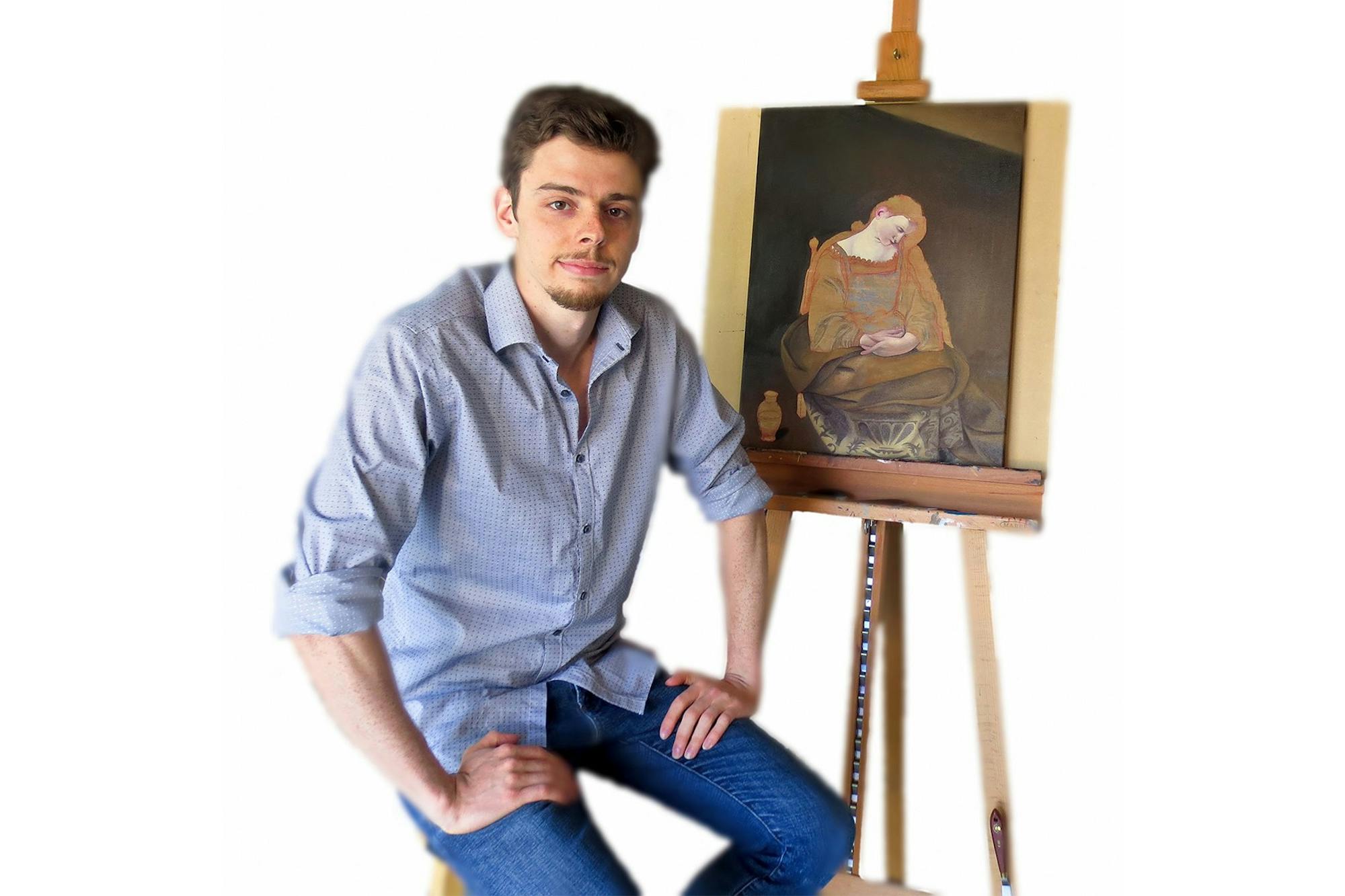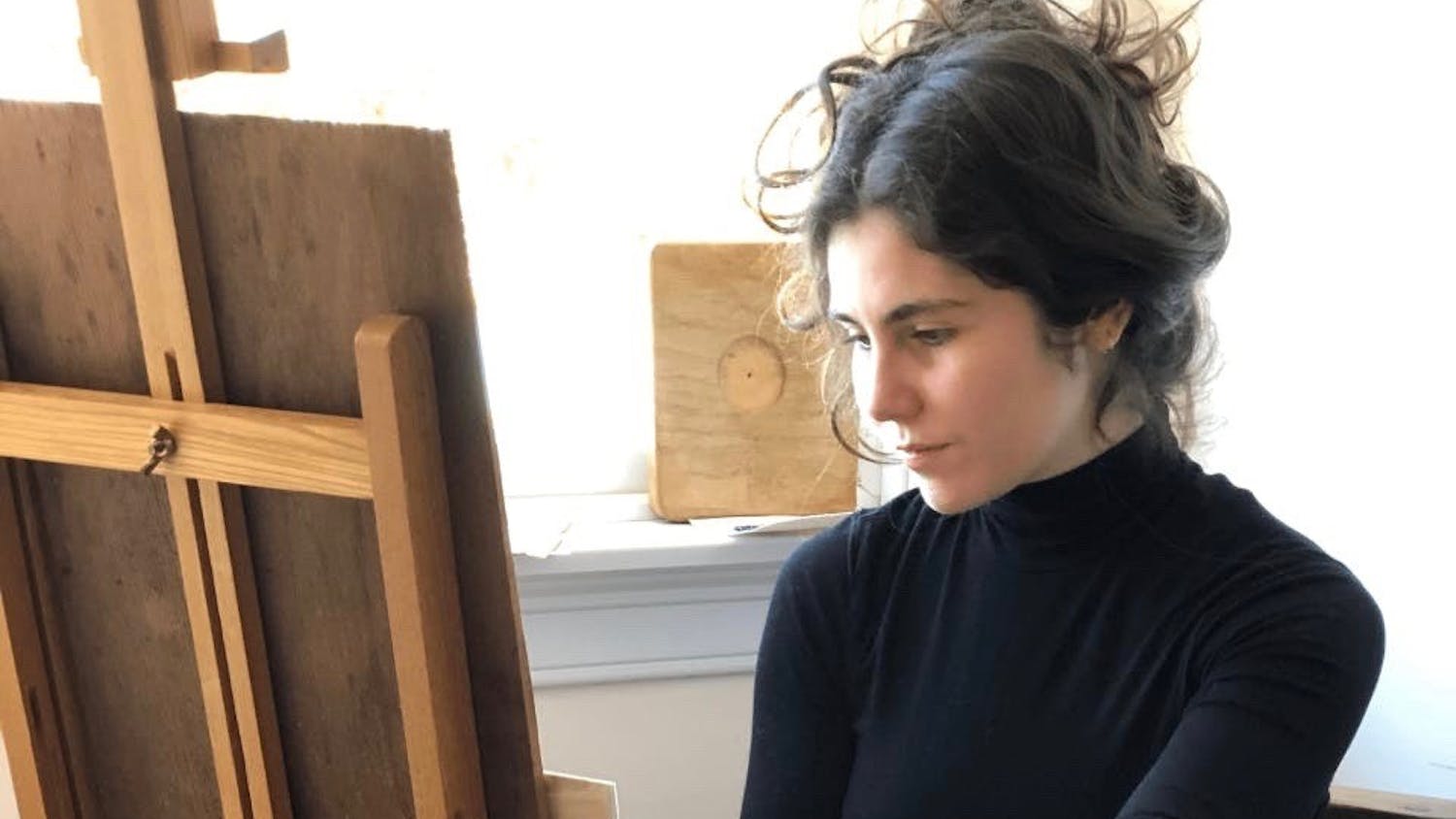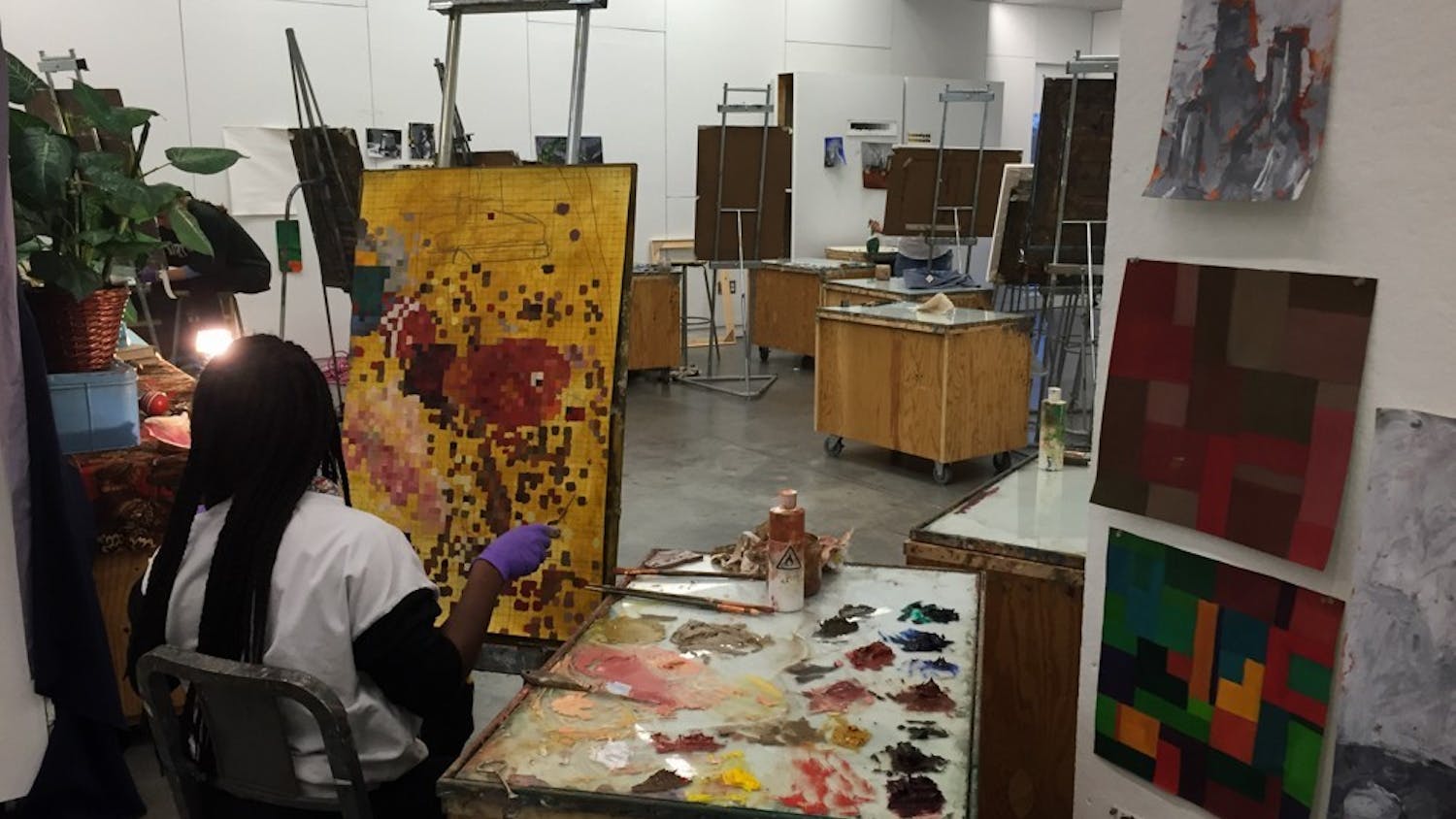Studio art intern Kevin Soraci ’18 seeks to find beauty in the ordinary. Soraci’s exhibition “The Comforts of Home,” currently displayed in the Barrows Rotunda of the Hopkins Center for the Arts, features paintings of scenes from everyday life, capturing a space that can feel both familiar and peculiar.
All of the paintings in the exhibition were made in the past year; however, Soraci said they were not inspired by the pandemic. Soraci said that he’s always been drawn to painting everyday scenes and the relationships between figures and interior spaces.
“[The paintings] felt a bit eerie,” said studio art professor Esmé Thompson, who taught Soraci in SART 25, “Painting I,” as well as his senior seminar. “To me they felt like the light you’d have in a dream.”
Soraci’s current exhibition builds on his time as an undergraduate at Dartmouth. Soraci painted throughout high school and came to Dartmouth planning to pursue a major in engineering with a minor in studio art, followed by a bachelor of engineering degree from the Thayer School of Engineering. It wasn't until the summer before his senior year that he realized he wanted to consider a career in the arts. That summer, Soraci worked in Morocco with artist-in-residence and Montgomery Fellow Eric van Hove, where he utilized 3D printing to help with one of van Hove’s projects.
Soraci subsequently decided to take more studio art classes during his senior year. He graduated in 2018 with a double major in engineering and studio art and opted to take a gap year before completing his remaining requirements at Thayer. At the time, he moved to Montana to work as a machinist, where he did hands-on work engineering and made art on the side.
Soraci never came back to finish the engineering requirements. He stayed in Montana for two years, eventually deciding to focus more on his art.
“I think you have to do both [work and art] until you're ready to just do one,” Soraci said. “If your art isn't good enough yet, you have to find a way to support yourself. You have to just do art on the side until it becomes good enough that you could do it full time.”
Since the start of the academic year, Soraci has been working as an intern in the studio art department. He credits his internship for allowing him to focus on his craft while also being supported by a robust faculty network.
Soraci’s access to the studio as an intern allows him and his fellow interns to spend time working on their own projects. Soraci’s current work includes faculty-directed projects and commissions — mostly from family and friends — as well as some projects of his own.
Soraci said that faculty members in the studio art department at Dartmouth — especially professors John Lee, Karolina Kawiaka, Colleen Randall and Thompson — have all had positive influences on him.
Thompson in turn praised Soraci’s artistic abilities, discussing his interest in painting nocturnes, which are paintings that depict nighttime scenes.
“From the very beginning, he was just amazing,” Thompson said. “During the term, he would go out into the streets at night and do night paintings of people in Hanover.”
When Soraci started painting nocturnes, he didn’t have any conceptual goals in mind.
“I just liked them because you have a really strong sense of color and light in night paintings, because they’re emphasized by the darkness,” Soraci said. “There's something isolating about the night. There’s something dark, but then the lights and the colors give you hope.”
Part of Soraci’s fascination with darkness and painting nocturnes is inspired by American singer-songwriter Bruce Springsteen. Soraci listens to music while he paints — almost exclusively Springsteen, classic rock and classic funk.
Soraci said his work strives to connect with Springsteen’s on both an abstract and spiritual level.
“Sometimes I have a hard time explaining how I draw inspiration from Bruce Springsteen in my work,” Soraci said. “The best way I can describe it is that my paintings feel like his songs. I think that's the case with my night paintings, especially.”
One of Soraci’s past collections, titled “Night Scenes,” is described on his website as “an exploration of the magical qualities of night.”
“My work is not in the kind of echelon that [Springsteen’s] work is, but they do share some thematic similarities in that they both strive for a universal human experience, and they both dig deep into human psychology, weighing both the suffering and the beauty, the pain and the hope,” Soraci said.
Soraci cited Caravaggio, Edward Hopper and Flannery O’Connor as other artistic influences. But he said his faith is the primary motivation for his work.
“I am a Catholic, and beauty is a tradition of the Church,” Soraci said. “That is something I always pursue in my work — to try to evoke and express beauty. I think beauty could address some of the cultural divides that we’re experiencing, so one motivation is trying to inject beauty in a culture that's fragmented, in trying to bridge some of that cultural divide.”
Soraci’s faith manifests throughout his portfolio, which often contains subtle liturgical references. During Soraci’s senior year, he undertook an independent study under the guidance of Randall; Soraci cited this experience as his most influential experience during his time at Dartmouth. In this project, Soraci reimagined Francisco de Zurbarán’s famous painting, “Agnus Dei,” which harshly illuminates the image of a bound sacrificial lamb surrounded by an obscured darkness.
“The symbol of the lamb represents something extremely profound, which is a kind of sacrificial love — an entire religion,” Soraci said of the painting.
Soraci drew inspiration from the painting and created his own “Agnus Dei,” painting an emoji-like lamb grazing on cartoon pasture scenes.
In addition to the “Agnus Dei” painting, Soraci printed stickers of his emoji lamb and distributed them to peers and professors, acknowledging the limited audience that a gallery painting might have.
“I think where we are now, in our culture, our symbols are emojis, and there’s not much meaning imbued within those symbols — as opposed to a symbol like the sacrificial lamb,” Soraci said. He described his work as “a critique of postmodernism” that “juxtapos[ed] contemporary modes of communication and symbolism with traditional symbolism.”
Randall noted this contrast between the traditional and contemporary makes Soraci’s art distinctive.
“He roots himself in long-respected and deep traditional knowledge, and then he develops a new point of view on it,” Randall said. “He rearticulates that technique and that knowledge for more contemporary situations.”
Randall also emphasized the thread of hope that runs through Soraci’s art.
“There is always some kind of virtuous content to his paintings, his imagery and his art that is optimistic without being unrealistic,” she added. “It's aspirational.”




